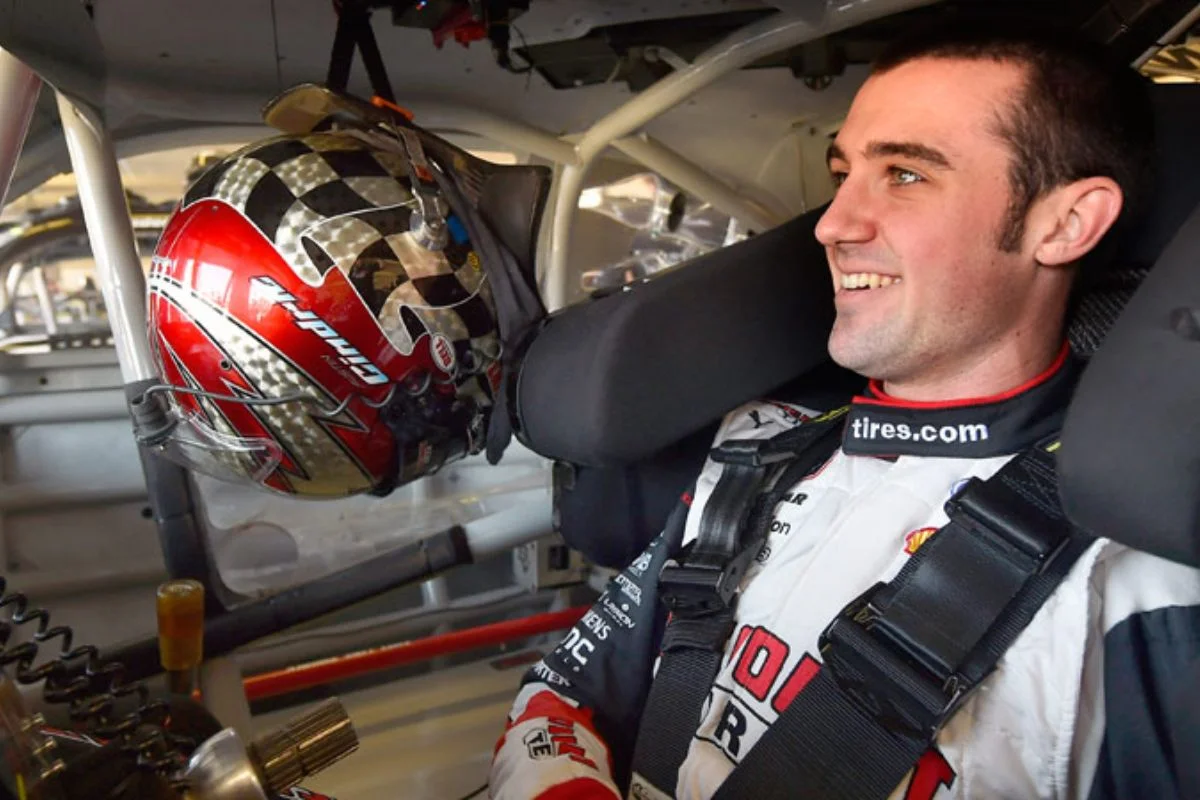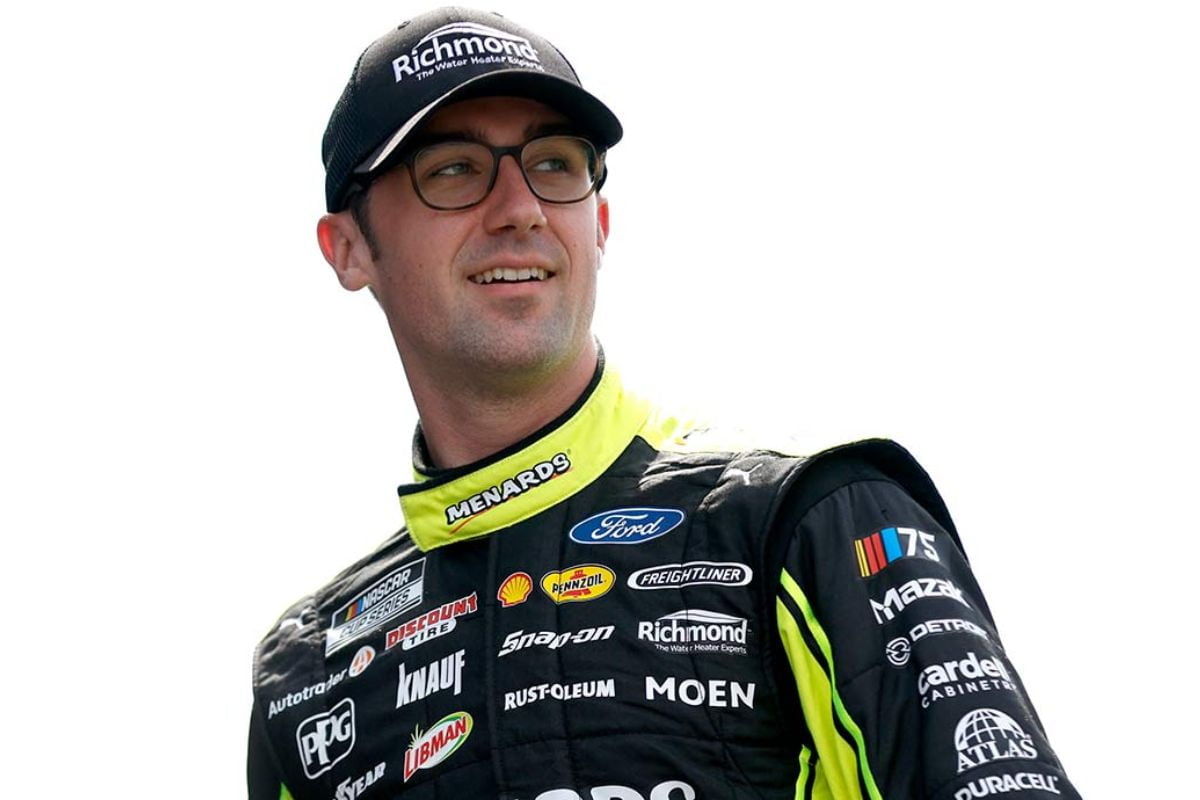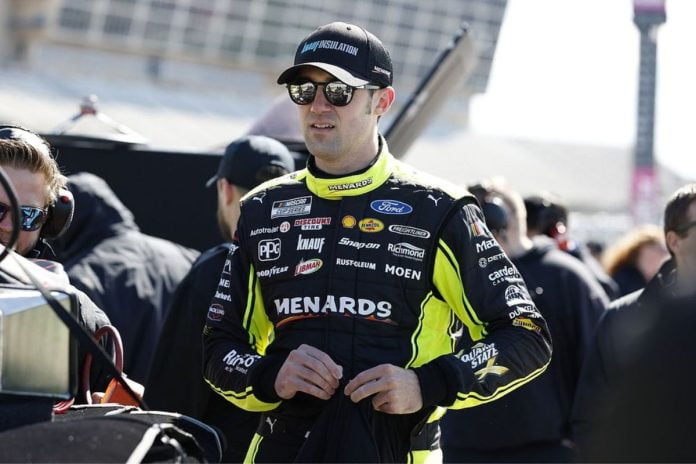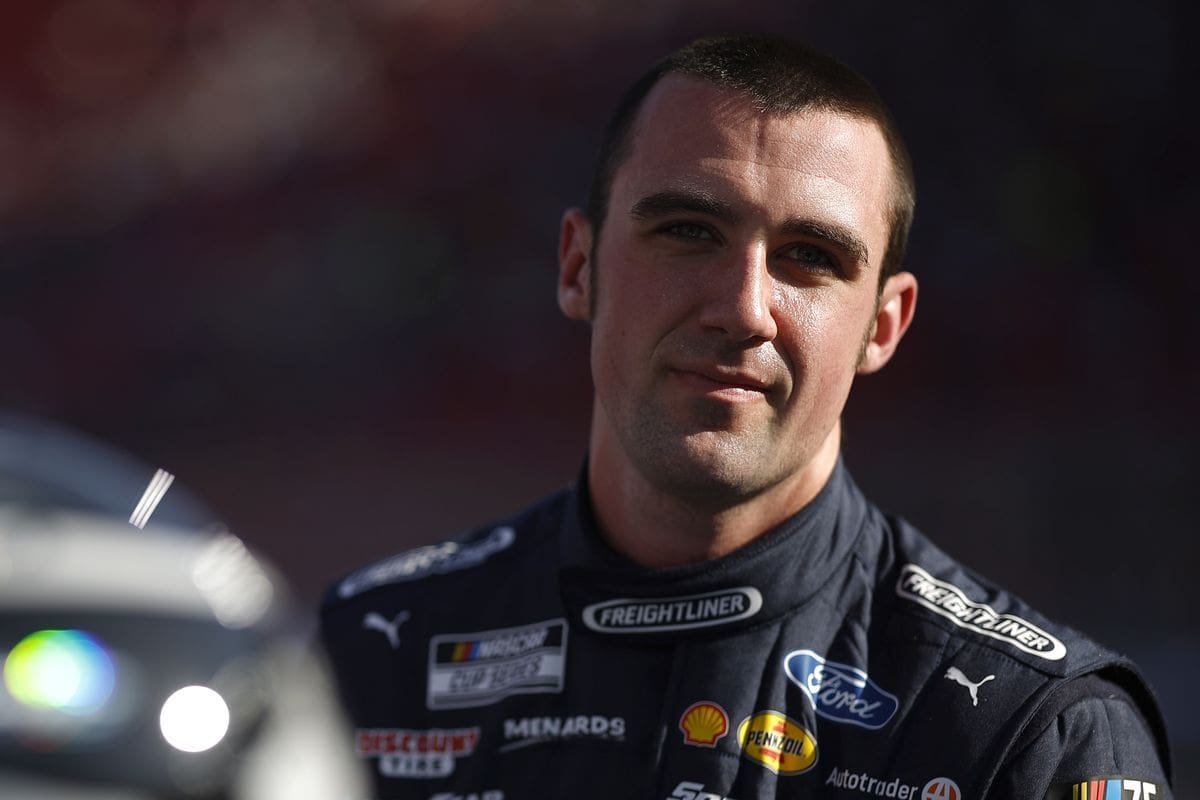Austin Cindric’s Nosebleed Mishap: Austin Cindric, following his successful performance at the Talladega qualifiers an occurrence that vividly illustrates the often underappreciated physical exertions associated with NASCAR driving. This incident not only sheds light on the physiological impacts of high-speed motorsports but also raises questions about the adequacy of current health monitoring practices within the sport. As we consider the implications of such health-related episodes, one must wonder about the potential changes that might be necessitated in the sport’s medical protocols to better safeguard the well-being of its competitors.
Key Takeaways
- Austin Cindric experienced a nosebleed after his top finish in Talladega qualifying.
- The nosebleed was triggered by environmental factors and physical strain.
- This incident highlights the intense physical demands faced by NASCAR drivers.
- Continuous health monitoring and medical readiness are emphasized for drivers.
- Cindric’s nosebleed was also humorously linked to his novice golfing attempt post-qualifying.
Ford’s Struggle and Talladega Qualifying Success
Despite encountering a challenging season, Ford demonstrated a remarkable turnaround during the Talladega qualifiers, with their drivers securing the top positions on the starting grid. This success marks a significant moment for Ford, particularly with the introduction of the Mustang Dark Horse—an inventive model designed to advance the brand’s competitive edge.
Analyzing the performance dynamics, Ford’s achievement can be attributed to several key factors. Foremost, the engineering enhancements in aerodynamics and engine efficiency have played vital roles. The Mustang Dark Horse, in particular, was engineered to optimize high-speed stability—a critical attribute on Talladega’s high banks and long straights.
Furthermore, Ford’s strategic deployment of resources in both technology and team coordination has been instrumental. Collaborative efforts between teams under the Ford banner facilitated an exchange of data and tactics, improving overall performance.
This resurgence is significant not just for its immediate results but for its implications on the team’s morale and strategic direction. After a period of underperformance relative to Chevrolet and Toyota, clinching the top qualifying spots represents a morale enhancer and a reaffirmation of Ford’s commitment to innovation and competitive excellence in NASCAR.

Austin Cindric’s Nosebleed Mishap
Building on Ford’s recent success at the Talladega qualifiers, Austin Cindric experienced an unexpected personal setback when he suffered a nosebleed shortly after his victorious qualifying run. The incident, captured and shared by Cindric himself, showed the 25-year-old Team Penske star with a bloodied nose, sparking a mix of concern and curiosity among fans and followers. This physical anomaly, while minor, highlights the intense demands and physical challenges faced by NASCAR drivers, even in the aftermath of their competitive successes.
“Today’s highlights: qualifying on the front row and keeping all my teeth. Golf ain’t fore everyone. Need to work on my chipping…” -(Cindric)
Nosebleeds, medically known as epistaxis, are commonly triggered by environmental factors and physical strain. In the high-speed, high-stress environment of professional racing, the combination of dry air circulated within the racecar cockpit and the heightened blood pressure associated with intense focus and exertion can precipitate such episodes. For Cindric, whose career has been marked by both physical resilience and skillful driving, the occurrence might seem minor but is indicative of the oft-overlooked aspects of motorsport challenges.
View this post on Instagram
Austin Cindric’s Golfing Mishap
Austin Cindric’s light-hearted attempt at golf following his qualifying success at Talladega took an unexpected turn, resulting in a nosebleed that he humorously attributed to his novice chipping skills. This incident, shared openly on social media, highlights an often overlooked aspect of sports crossover: the challenge athletes face when engaging in sports outside their primary domain. Cindric, a professional NASCAR driver, ventured into the world of golf, a sport that demands a distinct skill set, contrasting sharply with the high-speed, adrenaline-fueled environment of auto racing.
Golf requires precise motor control, patience, and a markedly different type of physical coordination compared to racing. The skills in swinging a golf club involve intricate muscle memory and biomechanics that are honed over years of practice. For Cindric, whose primary physical and mental training is intensely focused on the dynamics of racing, adapting to the finesse of golf presented a unique challenge, humorously highlighted by his comment about needing to improve his chipping.

Austin Cindric’s Performance at Talladega
At the Talladega Superspeedway qualifying race, Austin Cindric exhibited remarkable skill and precision, securing a top spot finish in stage 1 with a razor-thin margin over Chase Elliott. Cindric, piloting his vehicle with a calculated aggression and technical finesse, clocked a stellar qualifying time of 24.500.
Cindric’s strategic positioning became evident as he adeptly positioned himself ahead of the pack. The race was filled with challenges, including a significant crash involving Michael McDowell and Brad Keselowski. Despite the chaos, Cindric maintained composure, steering clear of the turmoil and focusing on the details of racecraft that often dictate outcomes at such high-speed venues.
His approach to the race was a blend of cautious strategy and bold overtakes. By narrowly edging out Chase Elliott, a seasoned competitor, Cindric not only showcased his racing skills but also solidified his reputation as a strong contender in NASCAR’s elite circuit. The victory in stage 1 was a reflection of his skillful navigation of both the physical and strategic elements of the race.
Importance of Track Position at Talladega
While Austin Cindric’s skillful navigation of Talladega’s challenges was instrumental in his stage 1 victory, the strategic importance of maintaining ideal track position at this venue cannot be overemphasized. At Talladega, the combination of high-speed drafting, tight pack racing, and the looming threat of ‘The Big One’ multi-car accidents amplify the stakes associated with track position.
The layout of Talladega Superspeedway and its prolonged 1730 feet pit road with 44 stalls add strategic depth. Positions closer to the pit exit offer a significant advantage, providing a quicker re-entry to the race and often crucial moments saved during pit stops. These elements highlight why track position is not merely about speed but about strategic placement and timing.
The enforcement of restrictor plates at Talladega levels the playing field to some extent, putting a premium on driver skill and tactical expertise rather than sheer horsepower. This regulation ensures that maintaining an advantageous track position through strategic drafting and timely pit stops becomes a critical aspect of racing strategy.
News in Brief: Austin Cindric’s Nosebleed Mishap
The incident involving Austin Cindric’s nosebleed post-Talladega qualifying highlights the significant physical demands and environmental challenges faced by NASCAR drivers. This event not only emphasizes the need for thorough health monitoring and medical preparedness in motorsports but also serves as a stark contrast to less physically taxing sports, such as golf.
Such occurrences emphasize the crucial importance of maintaining peak physical condition and readiness in the high-stakes environment of professional racing.
Our Reader’s Queries
Q. What car does Austin Cindric drive in NASCAR?
A. The team is banking on replicating the success of Cindric’s stellar rookie campaign in 2022, when he dazzled behind the wheel of Team Penske’s No. 2 Ford. Cindric’s remarkable victory in the 2022 “Great American Race” occurred in only his eighth NASCAR premier series start, a remarkable feat that coincided with team owner Roger Penske’s birthday.
Q. How many NASCAR races has Austin Cindric won?
A. Cindric, the 2020 NASCAR Xfinity Series champion, showcased his prowess by clinching five victories during the 2021 season. With these wins, he strengthened his career tally to an impressive 13 Xfinity victories. Additionally, Cindric secured a spot in the Championship 4, further solidifying his status as a formidable contender in the series.
ALSO READ: Austin Cindric’s Martinsville Disaster: Fans Compare Him to Austin Dillon



